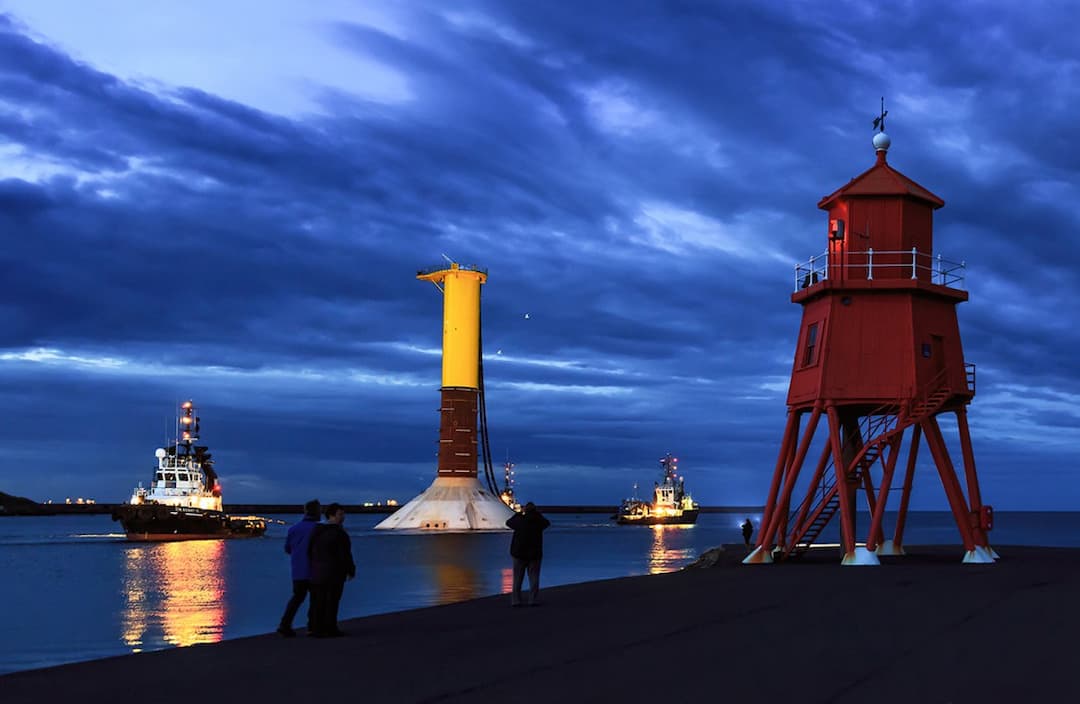As another giant structure makes its way up the River Tyne before being installed, this concrete gravity-based foundation (GBF) destined for the EDF Energy Renewables ( EDF ER) Blyth Offshore Demonstrator Wind Farm has been fitted with a groundbreaking sensor system designed by the Offshore Renewable Energy (ORE) Catapult.
This is the first time that sensors have been installed in a gravity-based foundation and used to analyse the performance of the foundations in the challenging conditions they will be exposed to in the real world. The data collected from the sensors will be synchronised with ORE Catapult’s met mast, located three nautical miles off the Blyth coast.
The sensor system, installed on two of the five foundations, is part of the Demowind-funded FS Found project, in which ORE Catapult is partnering with EDF ER and Royal BAM Group to demonstrate and validate the new ‘float and submerge’ GBFs at the design, manufacture and installation stages.
Jonathan Hughes, ORE Catapult’s Technical Lead on FS Found, said: “Float and submerge gravity-based foundations have the potential to be deployed without the need for expensive installation or heavy lift vessels.
“Incorporating a condition monitoring system into this first demonstration of this new technology will help the industry to improve design optimisation and reduce costs, helping to make GBFs commercially viable as a foundation solution.”
The Blyth Offshore Demonstrator project is being built by EDF Energy Renewables. The project will see five wind turbines with a total generating capacity of 41.5MW installed around 6.5km off the coast of Blyth.
Royal BAM Group designed and built the gravity-based foundations used in the project.
Blyth Offshore Demonstrator Wind Farm – Key Facts:
- The Blyth Offshore Demonstrator project will produce enough low-carbon electricity to power approximately 34,000 UK households
- It will save around 57,600 tonnes of CO2 emissions each year
- It will be the first offshore wind project to connect using 66kv rated cables
- It will be the first time that a “float and submerge” gravity-based foundation is used for offshore wind turbines
- Each gravity based foundation will weigh more than 15,000 tonnes when fully installed
- 8.0MW wind turbines with a power mode uprating them to 8.3MW will be installed


